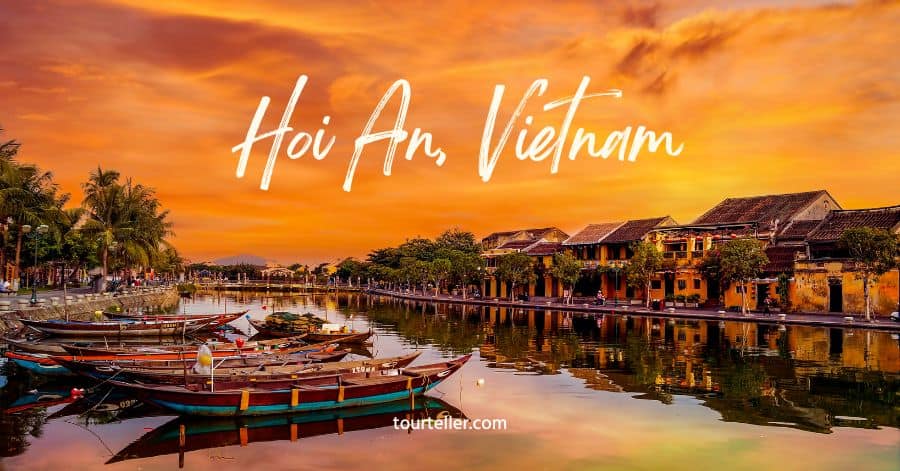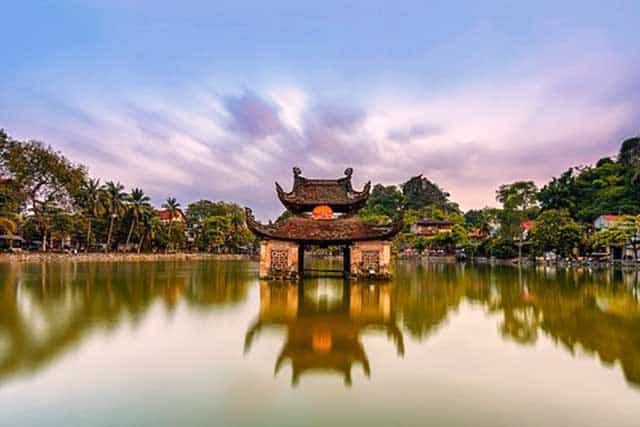Hoi An, a serene city with many picturesque scenes, is renowned as one of the popular tourist attractions in Vietnam. Visitors are pleased with the historic and picturesque setting, unique experiences, and fantastic photos they get. If you’re considering visiting this wonderful land, look over this list of 20 things to do in Hoi An to ensure you don’t miss anything exciting.
- About Hoi An
- Best time to visit Hoi An
- Best Activities to do in Hoi An
- Wander around the Hoi An Ancient Town with a camera in hand
- Take a picture with the Japanese Covered Bridge
- Float lotus flower lanterns into the Hoai River
- Get an Ao Dai or suit made on the same day
- Experience farming in Tra Que vegetable village
- Take a trip to Thanh Ha Terracotta Park
- Explore Hoi An night market
- Take in the heritage of the Phung Hung ancient house
- Visit lantern street (Nguyen Phuc Chu Street) at night
- Create lanterns on your own
- Experience woodworking at Kim Bong Carpentry Village
- Discover the Cham island (Cu Lao Cham)
- Cruise through the Seven-acre coconut forest – Rung dua 7 mau
- Taste Cao Lau – Top 1 Hoi An specialty
- Savor a mouthwatering bowl of Quang noodles (Mi Quang)
- Enjoy a cup of coffee with a stunning view of the Old Quarter
- Sunbathe at Cua Dai beach
- Visit Fujian Assembly Hall
- Grab some souvenirs at Hoi An market
- Visit the Museum of Folklore in Hoi An
About Hoi An
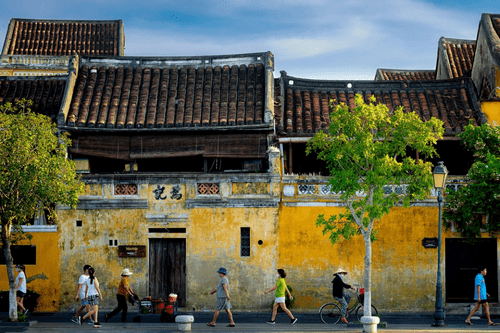
Hoi An is a city in Quang Nam province in central Vietnam, approximately 795 kilometers from Hanoi. This location was formerly a bustling international commercial port, with historical landmarks and centuries-old neighborhoods still largely undamaged today. Since 1999, Hoi An Ancient Town has been designated as a UNESCO World Heritage Site.
Best time to visit Hoi An
The weather of Hoi An is a mix of the North and the South, with distinct rainy and dry seasons. The old town is beautiful throughout the year.
The best time to visit Hoi An is during the first three months of the year when the weather is pleasant, the sun is not too hot, and it occasionally sprinkles a little bit.
Since Hoi An is situated in the southernmost part of the Truong Son range, it avoids the harshest part of the dry season, which lasts from April to June. This is also the busiest travel period.
It’s still dry season in July. Seasons shift during August and September. It’s still sunny, but there are periodic downpours, and it gets chilly at night.
In Hoi An, the last three months of the year are the rainy season, during which there are few sunny days, heavy downpours, and occasionally flash floods. You better not visit Hoi An this season. But if you still want a trip, pack warm clothing because this is also winter here.
Best Activities to do in Hoi An
Wander around the Hoi An Ancient Town with a camera in hand
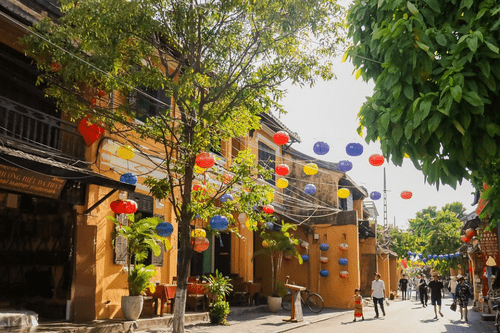
The old town of Hoi An is situated in the province of Quang Nam, downstream from the Thu Bon river. Hoi An has been a thriving port for international trade since the 17th and 18th centuries. It still exhibits the harmonious beauty of various traditional Asian civilizations. This location is always at the top of must-visit locations for foreign visitors to Vietnam because of its distinctive attractiveness.
Spend the morning strolling around the historic streets and taking in the landscape along the banks of the alluring Hoai River while taking in the crisp, chilly air. The houses with the antique architectural style will make you feel simple and rustic with their moss-covered tile roofs. Aside from that, you’ll observe how Hoi An residents live a straightforward, tranquil life. You can capture countless breathtaking pictures at every corner of the roadway with a camera or phone.
Take a picture with the Japanese Covered Bridge
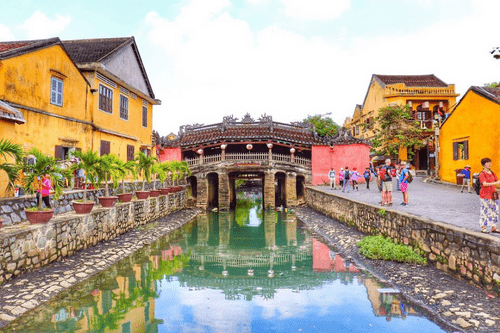
The Hoi An Japanese Covered Bridge is the ancient town’s tourism icon. Thanks to its construction in the Japanese style, this location leaves a lasting impression. You may immediately recognize this temple if you have used or seen Vietnamese currency. Because this place is portrayed on a Vietnamese 20.000 VND banknote.
It appears to be nothing more than a bridge used to cross a river, and it also goes by the name Chua Cau (Bridge Pagoda). But when you cross the bridge, you’ll notice a pagoda that resembles a temple to the bridge’s north. People call it Chua Cau for this reason.
During the seventeenth century, Japanese traders built this spot to conduct business with Chinese people living on the other side of a tiny stream. The myth of a monster by the name of Namazu is connected to this location. Its head is in India, its body is in Vietnam, and its tail is in Japan. Earthquakes and floods occur whenever a monster moves. This temple was constructed to represent a sword blocking a monster’s back. As a result, it won’t be able to disrupt people’s daily lives. The three nations have remained tranquil and prosperous ever since.
In contrast to other temples, Chua Cau does not worship Buddha. In this location, they worship Bac De Tran Vo, the national protector god who delivers joy and happiness to the populace. As a result, there are continuously thousands of tourists and locals looking for wonderful stuff. Stop by this location to pray and wish yourself a great fortune.
- Address: 186 Tran Phu, Minh An Ward, Hoi An, Quang Nam
Float lotus flower lanterns into the Hoai River
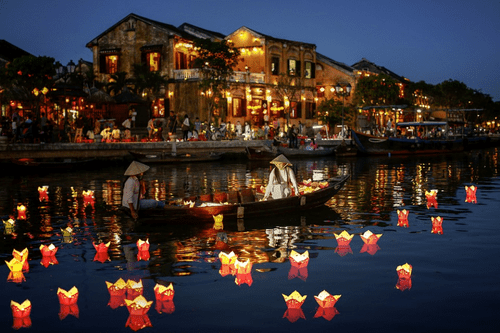
Even though the Old Quarter is bustling with evening activities, the lotus flower lantern release is undoubtedly the most unique. Every Saturday, this event is held, but on the full moon days and the first of the lunar month, it will be more crowded and busy.
Despite having Buddhist roots, this lantern-releasing event draws many tourists from different faiths. It is like giving prayers wings when flowers are discharged into the Hoai River and are seen drifting to the sea. The lantern’s light represents hope, bringing comfort and easing anxiety.
In the middle of the historic street lit up by shimmering lights, you can purchase lanterns for 0.3 USD and then send your wishes to fall into the enchanting Hoai River. It’s even more thrilling because, for only approximately 2 USD, you could take a boat and glide down a river filled with sparkling lights.
Get an Ao Dai or suit made on the same day
If you don’t already have great attire prepared for taking photos in Hoi An, or if you want a lovely ao dai or suit that fits you well, come and try the quick tailoring service.
Here, a costume can be finished in a few hours instead of the typical few days. After the customer consults the models and decides on the desired style, the tailors will start working on it immediately. After stitching, they will contact you for pick-up or send the item directly to your hotel address. The pricing will be greater than other sites because fine fabrics and silks are used here. Prices will start at $25 USD and more.
Most often, people will choose to make a suit or Ao Dai. Who wouldn’t want to explore Hoi An’s town while dressed in traditional Vietnamese clothing, right?
Several renowned tailoring shops:
- BeBe Tailor: 05-07 Hoang Dieu, Cam Chau, Hoi An, Quang Nam (Branch 1)
- A Dong Silk: 40 Le Loi, Hoi An, Quang Nam (Branch 1)
- Bao Khanh Silk: 101 Tran Hung Dao, Minh An Ward, Hoi An, Quang Nam
- Yaly Couture – Tailor Hoi An: 358 Nguyen Duy Hieu, Cam Chau, Hoi An, Quang Nam
Experience farming in Tra Que vegetable village
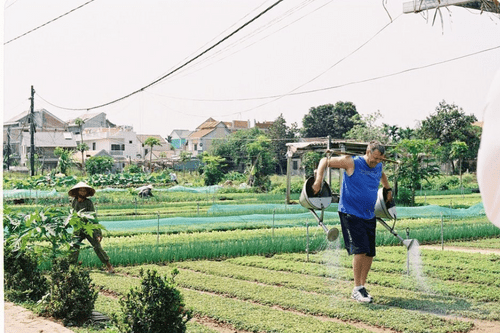
Tra Que, located north of Hoi An, is a traditional vegetable-growing village. With a tradition spanning nearly 300 years, the families here rotate and intercrop more than 20 types of vegetables and spices over an area of more than 40 hectares. Vegetable growing in this region creates ultra-clean vegetable products through a closed process that is especially gentle on the environment, bringing health to consumers.
People who visit this place don’t just come to admire the scenery and watch others grow vegetables. Tra Que allows visitors to experience what it is like to be a real farmer, including how to tend to, water, and harvest their crops. The locals will allow you to participate in regular activities like fishing and riding a buffalo.
Tra Que also offers cooking classes where you can learn how to make local dishes using fresh products. It is a rewarding experience to participate in making local dishes and then enjoy them in the tranquil village atmosphere. Another experience worth attempting is cycling along the roads surrounding this vegetable town to take in the cool, happy ambiance in the large vegetable fields here. With a ticket price of about 0.85 USD, you can experience everything here. Sounds too good to be true, doesn’t it?
- Address: Cam Ha, Hoi An, Quang Nam
Take a trip to Thanh Ha Terracotta Park
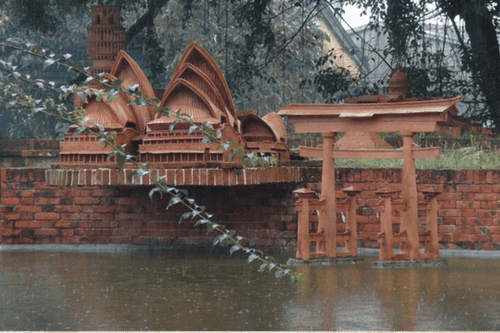
From the heart of Hoi An, the park is roughly 5 kilometers away. This is a “unique” ceramic museum of Vietnam and one of the biggest ceramic parks in the country.
The Thanh Ha Pottery Park has a special building design based on the concept of Earth, Water, and Fire, with the image of a pottery turntable as the focal point. The park is situated amid the hamlet, and the same way rivers frequently surround the traditional Vietnamese villages. The park’s design is based on the layout of the ceramic factories, which includes: stores, kilns, ceramic turntables, product displays, etc.
This park serves as a venue for the showcasing and exhibition of goods from the Thanh Ha pottery village and numerous other craft villages. Visitors are spoilt with the opportunity to see distinctive and elegant ceramic works. You can enjoy the world-famous structures faithfully recreated in the miniature globe area and Pottery Village Museum. Some typical ones are Australia’s Leaning Tower of Pisa and Australia’s Sydney Opera House, the Taj Mahal in India, and the Pyramids in Egypt.
- Address: Duy Tan, Thanh Ha, Hoi An, Quang Nam
- Open hour: 8:30 AM – 5 PM daily
- Entrance ticket: 0.85 USD/person for children, 1.69 USD/person for adults
Explore Hoi An night market
The night market is a dynamic highlight not to be missed in the center of the serene, traditional old street. On Nguyen Hoang Street, near the lovely Hoai River, on the opposite side of the Japanese Covered Bridge, is where you can find this market. There are more than 50 carts that have been artistically adorned by people along the market’s 300-meter length. This site not only boasts wonderful street food and unique goods, but you can also enjoy several musical acts and engage in folk activities.
In particular, you should see Hat Choi performed every day at 7 PM in the market’s shared house yard. Hat Choi is a form of traditional entertainment common in Central Vietnam. It combines music, poetry, drama, painting, and literature. In addition to playing musical instruments, the performers will sing to one another and play chess. Since 2017, UNESCO has acknowledged this Vietnamese art as the world’s premier intangible cultural treasure.
Take in the heritage of the Phung Hung ancient house
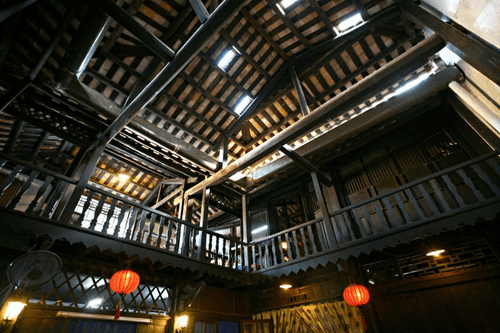
(source: vnexpress.net)
While strolling through the lovely old town, you may observe many wonderful historical structures and other tourist attractions. One of the most well-known structures and a cultural treasure in Hoi An’s historic town is the Phung Hung ancient house.
This house was built in 1780, during the wealthy prosperity of Hoi An. The home is also one of the most stunning architectural features in the ancient town. The artifacts have been completely maintained for more than 200 years.
As soon as you enter the house, it is noticeable that the Vietnamese, Japanese, and Chinese architectural styles have blended. Chinese architecture is especially evident in the balcony and door system. Japanese architecture is used on the roof. Crossbeams, barges, roof facades, and back characterize Vietnamese architecture. This spot is a typical form of a business house from the 19th century in urban Vietnam. If you want to learn more about the way of life of the Hoi An people in the past, just come to this antique house.
- Address: 4 Nguyen Thi Minh Khai, Minh An Ward, Hoi An, Quang Nam
- Open hours: 8 AM – 6 PM daily
- Ticket: 3.38 USD/person
Visit lantern street (Nguyen Phuc Chu Street) at night
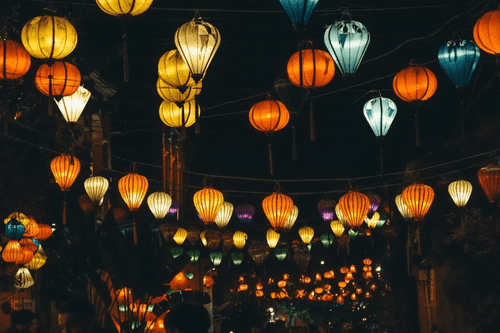
When you arrive in Hoi An, yellow houses and lanterns of all forms hanging everywhere will undoubtedly be the first thing to attract your sight. The lanterns are incredibly beautiful at night, illuminating the entire neighborhood. Head to lantern street to truly appreciate Hoi An’s historic town’s charm at night.
Since lantern street is located in the heart of the ancient town, traffic will be prohibited at night, and only pedestrians will be permitted to visit and explore. This location also has no restrictions on opening and closing times, so you can visit and have fun whenever you want. At night, lanterns of all shapes and hues shine brilliantly. Anyone who got “lost” here will feel as though they are in a vibrant wonderland.
Particularly, this place regularly has a lively lantern festival filled with shimmering lights thanks to the sophisticated lanterns on the 14th day of the lunar month and the mid-autumn festival every year. All businesses, restaurants, and homes will turn off their lights on this day. On their front porches, Hoi An residents will hang lanterns of varying sizes, hues, and designs, adding glimmer and fantasy to the entire neighborhood.
Create lanterns on your own
If the vibrant and glittering lanterns of Hoi An have captured your heart, take part in the pleasure of creating your lanterns at local lantern producers.
Lanterns hold many significant connotations for Vietnamese people. They represent the humans and are placed straight at the shrine when making offerings, placing one under the protection of unobservable gods.
Additionally, each lantern’s shape and color signify something different. The Round Lantern, for instance, represents balance and harmony. Folklore holds that the round lantern hanging in the home is a sign that brings good fortune, warmth, and tranquility into the home. Red lights signify good fortune and family wealth. Therefore, making a lantern is a worthwhile experience, whether you keep it for yourself or give it to your loved one.
Many artists have agreed that creating lanterns is not a very difficult technique. All you need is a little bit of creativity and patience. There are typically four phases involved in creating a lantern. Picking out your favorite lamp’s shape is the first step. You can pick from various forms, including papaya and baby shapes. Suitable bamboo and upholstery fabric must be chosen in the second phase. The typical materials used for wrapping are aged bamboo and silk. The final phase is shaping the bamboo frame and wrapping the fabric. The artisans will provide unwavering guidance and assistance during this difficult process, so don’t worry. The decoration is the final phase. And that’s it, sounds interesting, right?
Some reputable lantern businesses:
- Huynh Van Ba Lantern Production Workshop: 15A Phan Dinh Phung, Cam Son, Hoi An, Quang Nam
- Ha Linh Lantern Manufacturing Unit: 72 Tran Nhan Tong, Cam Chau, Hoi An, Quang Nam
Experience woodworking at Kim Bong Carpentry Village
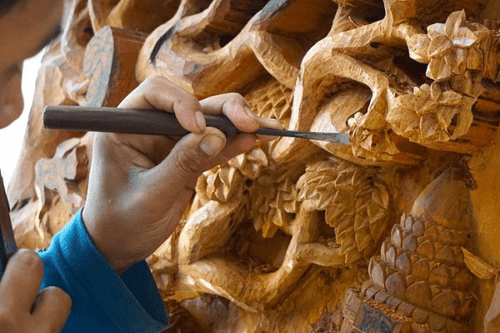
(source: vinpearl.com)
Kim Bong Carpentry Village is a traditional handicraft village close to Hoi An’s ancient town. You can get here by using a variety of transportation, including cycling, motorbikes, and boating, which is also extremely fresh and intriguing.
Kim Bong carpenter village began focusing on carpentry in the 16th century. It also went through numerous periods of rapid expansion in response to the hectic commerce rhythm of Hoi An port town. Even though the golden age is long gone, the skilled craftsmen of the Kim Bong carpentry village continue to practice the old ways of life. They work together to restore and preserve the artifacts of the ancient town of Hoi An. Also, they frequently travel to construct the three-room old houses still in use today. Additionally, carpentry and handicrafts advanced significantly when the community started accepting visitors.
The sound of chisels, mugs, and clinking characteristic of carpentry is the first thing you notice while entering the village. This familiar sound is an essential part of people’s lives here. You can also gain a more authentic and clear perspective on carpentry. The most striking aspect is directly seeing the steps of manufacturing a wood product. It’s a fantastic idea to purchase a few things from here as gifts for your loved one.
- Address: Nong Thon Road, Trung Ha Village, Cam Kim Commune, Hoi An City, Quang Nam Province
- Open hour: all-day
- Free ticket
Discover the Cham island (Cu Lao Cham)
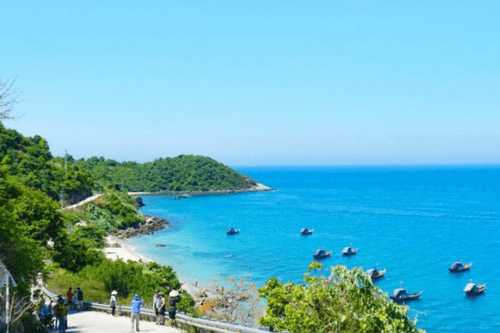
Cu Lao Cham’s island complex consists of one main island and eight subsidiaries of smaller islands. This island, located within Hoi An city’s jurisdiction in the province of Quang Nam, has a surface area of around 15 square kilometers.
In 2009, UNESCO designated the Cu Lao Cham island complex a global biosphere reserve. It protects up to 950 aquatic species. Unspoiled nature and the serene and charming fishing villages are the main draws for visitors to this area.
To visit this island, you must pay a ticket price of 2.96 USD and an environmental fee of 0.85 USD. Additionally, you must purchase a ticket to go from the mainland to the island. Depending on the means of transportation you select, ticket costs will change.
- Canoe: The cost of a ticket is roughly $8.47 per person. Those who enjoy the sensation of intense surfing may enjoy canoeing because the trip only takes 20 minutes.
- Wooden boat: The cost of a ticket is roughly 6.35 USD for Vietnamese and 8.47 USD for foreigners. A slower mode of transportation than canoes, wooden boats are not recommended for those prone to motion sickness.
Things to do on Cham Island
Check-in at Eo Gio
Eo Gio is located east of the Cu Lao Cham island cluster, approximately 3 kilometers from the Bai Lang residential neighborhood. You should not miss this spot if you are looking for a place to observe the dawn or sunset. Lush green mountains and a wide, unending sea and sky surround Eo Gio. This area acts as a city wall, shielding fishermen from the sea.
Visit Tan Hiep market
The Tan Hiep market, directly at the dock, is a must-see when visiting this island. You can purchase tasty fresh seafood, dried seafood, and one-of-a-kind souvenirs made of stones, snails, shells, and others. Because local fishermen catch and sell their catch on-site, the seafood at the market is more affordable and fresh than that found on the mainland.
Scuba diving to explore the coral reefs
Cu Lao Cham is known for its biodiversity, stunning natural scenery, and clean air. As a result, people are constantly drawn to the diving activities here to witness the corals and marine life. The greatest time for this activity is just before noon when the sun is at its highest and shines directly down to the ocean bottom. You’ll see a vivid representation of the kingdom of aquatic species, including seaweed, coral, sea critters, etc. The magnificence of the local seafloor environment will take your breath away, I promise.
Fishing on the island with local fisherman
When visiting this group of islands, many tourists find fishing to be a highly intriguing activity. Here, you may learn about fishermen’s real lives and experience what it’s like to be one. Observe the serene beauty of boats and the fisherman floating on the water. Have wonderful and fresh meals that you caught yourself after hand-catching the fish. Isn’t it a wonderful experience?
Cruise through the Seven-acre coconut forest – Rung dua 7 mau
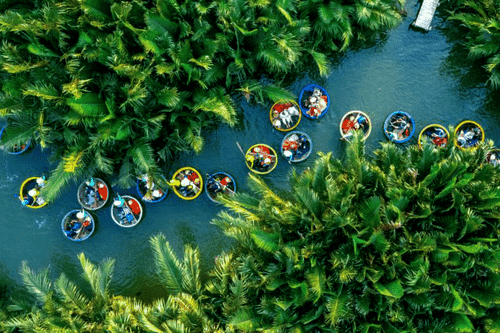
When people think about Hoi An, they immediately think of the old town with its antique architectural masterpieces. However, few people know there is a Mekong river garden similar to those found in Western Vietnam right in the middle of Hoi An. That is a seven-acre coconut forest. This well-known eco-tourism destination offers tourists a variety of riverside activities, vast coconut groves, and traditional basket boats.
As soon as you arrive, you’ll have the opportunity to sit in a basket boat and take in the scenery as it glides through lush coconut fields. You can listen to the delightful sounds of Quang folk songs while roaming and taking in the scenery while learning fascinating tales about the coconut forest.
Along with sightseeing and walking, you may take in the thrilling boat races and performances by basket boats. You will undoubtedly be in awe of the “artist” as they balance on the bobbing basket boat using smooth, incredibly quick, and remarkable motions. Don’t forget to applaud to inspire the riders during the equally thrilling boat racing exploits.
At the end of the voyage, the boatman will gift you mementos made of coconut leaves, such as watches, rings, locusts, tribal headgear, and so on. Although they are little gifts, they convey the Quang people’s charm, excitement, and simplicity. The boatman will also assist you in creating your personal favorites.
Tips: Because this is a river region, you should carry electronic gadgets in a waterproof bag and bring a backup charger if the battery goes out. Choose non-slip footwear for your feet.
- Address: Group 2, Can Nhan Hamlet, Cam Thanh Commune, Hoi An City
- Opening hours: 7 AM – 5 PM daily
- Entrance ticket: 1.27 USD/person
- Ticket for renting a basket boat: 6.36 – 8.48 USD/boat
Taste Cao Lau – Top 1 Hoi An specialty
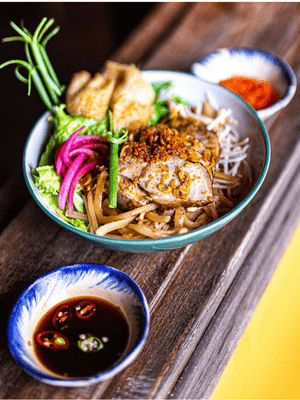
You haven’t visited Hoi An unless you’ve had Cao Lau. Only in Hoi An and a few locations in Da Nang can you find this Hoi An native specialty. It can be found in practically every major and little street because it is the culinary pride of Hoi An. The taste of this dish is still delectable and lovely even if you merely stop at a particular store to enjoy it.
Cao Lau is a rice-based, yellow noodle served with a rich broth that has been simmered with pork bones. This meal is topped with char siu, shrimp, and pork and is served with some vegetables and fried rice paper. The yellow noodles result from flour mixed with the ashes of a local plant, giving it a unique flavor not found anywhere else.
Cao Lau renowned restaurants
1. Cao Lau Ba Le
- Address: 49/3 Tran Hung Dao, Son Phong, Hoi An
- Opening hours: 6:30 AM – 9:30 PM daily
- Phone: 0937 691 891
- Price: 1.06 – 1.48 USD
2. Cao Lau Thanh
- Address: 26 Thai Phien, Minh An Ward, Hoi An
- Opening hours: 7 AM – 7:30 PM daily
- Price: 0.85 – 1.27 USD
3. Cao Lau Khong Gian Xanh
- Address: 687 Hai Ba Trung, Minh An Ward, Hoi An City
- Opening hours: 8 AM – 8:30 PM daily
- Price: 0.85 – 1.7 USD
Savor a mouthwatering bowl of Quang noodles (Mi Quang)
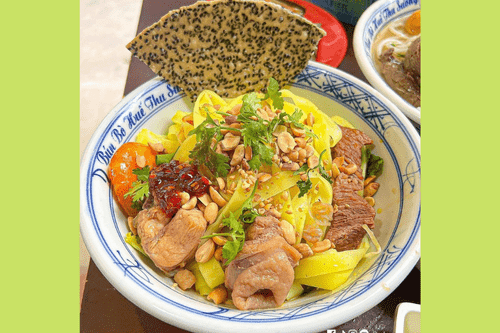
Vietnam is truly a noodle lover’s paradise. Mi Quang is a central Vietnamese specialty noodle dish. The name Quang here refers to the province of Quang Nam, where this meal originated. Many people mistake this dish for Cao Lau, but the two dishes are different and have different flavors.
The usual ingredients for making Quang noodles are finely ground rice flour, water derived from gardenia seeds, and eggs for the yellow hue. The batter will be steamed in thin layers and then cut into thin noodles measuring 5 to 10 mm. To create a flavor that is passionate and faithful to the central standard, Mi Quang must be eaten with the nine different flavors of fresh veggies that are underneath the noodles.
The rich broth will next be poured over the dish of noodles. Toppings will include pork, chicken, shrimp, boiled quail eggs, and occasionally snakehead fish and frog meat. The broth is prepared by simmering the meat in water or bone broth for a more powerful flavor, which is then seasoned with fish sauce, black pepper, shallot, and garlic. Unlike pho, the broth of Quang noodles is thick and luscious from various ingredients. Because there is very little broth on the noodles and it is never completely submerged, it has a very harmonious and lovely appearance.
Famous Mi Quang restaurants
1. Mr. Hai Noodles– Mi Quang Ong Hai
- Address: 6A Truong Minh Luong, Cam Chau, Hoi An city, Quang Nam
- Opening hours: 7:30 AM – 9 PM daily
- Phone: 0235 3914 406
- Price range: 0.63 – 1.69 USD
2. Mi Quang Bich
- Address: 272 Hung Vuong, Thanh Ha, Hoi An, Quang Nam
- Opening hours: 6:30 AM – 8 PM daily
- Price range: 0.85 – 2.12 USD
3. Mi Quang, Com Ga Que Huong
- Address: 164/3 Ly Thuong Kiet, Son Phong, Hoi An, Quang Nam
- Opening hours: 5:30 AM – 9 PM daily
- Price range: 1.27 – 4.23 USD
Enjoy a cup of coffee with a stunning view of the Old Quarter
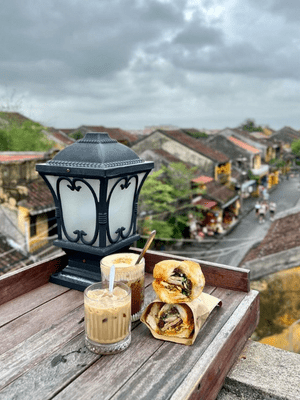
(source: @faifocoffee)
Coffee is a beverage that you must sample if you visit Vietnam. So what makes drinking coffee in Hoi An’s ancient town unique?
The cafés around here not only offer a wide selection of drinks, but they also make for fantastic photo locations. These stores frequently have decor that ranges from vintage to modern. For instance, many stores have rooftops so visitors can admire the entire old town. Sipping a wonderful beverage while admiring the picturesque ancient town will make you feel serene, pure, and free of all your problems.
Hoi An coffee shops
- Hoi An Roastery Espresso & Coffee House: 135 Tran Phu, Minh An Ward, Hoi An
- Faifo Coffee: 130 Tran Phu, Old Town, Hoi An
- Cocobox: 94 Le Loi, Minh An Ward, Hoi An
- Cong Cafe Hoi An: 64 Cong Nu Ngoc Hoa, Minh An Ward, Hoi An
Sunbathe at Cua Dai beach
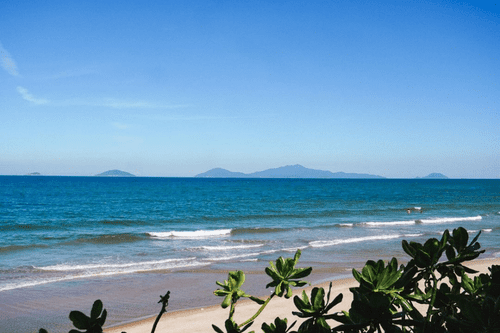
(source: @jonmarkgreen)
This gorgeous beach in Hoi An, one of the top 25 beaches in all of Asia, is 5 kilometers east of Hoi An’s historic town. The location is well-known for its dazzling turquoise water and miles of white sand beaches. What a beautiful sight, as the calm waves carry everything away in the blazing afternoon heat. Surrounding the beach are magnificent homes, comfortable and modern freshly built resorts, and lush green coconut trees.
Here, seawater has a unique feature that allows for magical color changes. The morning’s sea water is green but has changed to a jade-green color by afternoon. This unique charm has drawn a large number of visitors.
While visiting, you can sprawl out on the beach and enjoy the soft sunlight. Take a stroll in the calm and tranquility while watching the dawn and sunset. Additionally, taking part in beachside fishing is another fantastic activity. You can choose from various fishing rod rentals along the coast. Before opting to rent, don’t forget to inquire carefully about the cost.
- Address: Cam An, Hoi An, Quang Nam
Visit Fujian Assembly Hall
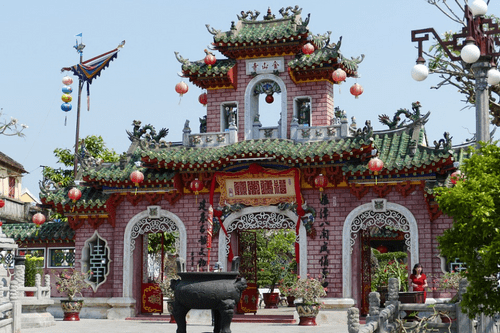
The most stunning and culturally Chinese of all the well-known assembly halls in Hoi An is the Fujian Assembly Hall. The Phuc Kien Assembly Hall used to be a modest shrine where people would worship a statue of Thien Hau Thanh Mau, who was thought of as the sea’s guardian deity who would aid traders in navigating the swells of the ocean. This place afterward served as a gathering place for Chinese immigrants from the Fujian province living in Hoi An.
The Assembly Hall of Fujian Hoi An has undergone numerous restoration and repair attempts. As a result, it is now more magnificent and spacious, adding to the old town of Hoi An’s aesthetic appeal.
You can come here to pray for luck and enjoy the antique architecture and priceless items. There are enormous incense burners here, so you can burn incense while writing wishes and prayers for loved ones on paper. The people here will help you burn the papers once the incense has finished so that the prayer will be more revered.
- Address: 46 Tran Phu, Cam Chau, Hoi An, Quang Nam
- Open hours: 7 AM – 6 PM daily
- Ticket: 6.35 USD/person
Grab some souvenirs at Hoi An market
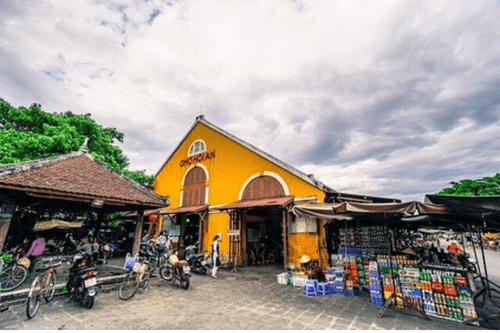
Hoi An market, a busy gastronomic haven in the center of the old town, is a popular destination that many visitors find challenging to leave once they enter. This location has numerous distinctive architectural elements of ancient Vietnam and is not just a site of trade. With mossy tiled roofs and golden walls that reflect the hue of time, this location exudes a rustic and bucolic beauty that evokes strong emotions in visitors.
There are numerous market sections, including fresh seafood, produce, souvenirs, and food courts. So when visiting Hoi An market, visitors may easily find the things they need to buy or the meals they wish to enjoy. In particular, you should visit this place if you want to buy souvenirs because the goods are varied and reasonably priced. Lanterns, bamboo chopsticks, artwork, keychains, bronze figurines, and other goods are among the things you can purchase.
Visit the Museum of Folklore in Hoi An
This museum is a typical ancient home in the Old Town, measuring 57m long by 9m wide and consists of two stories with wooden floors. This is one of Hoi An’s unique thematic museums. The Museum has demonstrated intangible cultural values and introduced rich cultural traditions, creativity, and contributions of different generations through original photos, artifacts, and performing activities. Local folks are constructing and developing Hoi An’s land.
Currently, 483 objects from 4 distinct themes are on display in the museum. These are, in succession, traditional craft villages, folk activities, folk performing arts, and folk visual arts. Make sure to visit this location if you enjoy cultural history.
- Address: 33 Nguyen Thai Hoc, Minh An Ward, Hoi An, Quang Nam
- Open hours: 7 AM – 9:30 PM daily
- Ticket: 6.35 USD/person
Hopefully, this article will somehow assist you in having a more fun and fulfilling trip. And if you have been to Hoi An, share with us about your favorite spots and the sites you’ve visited.
